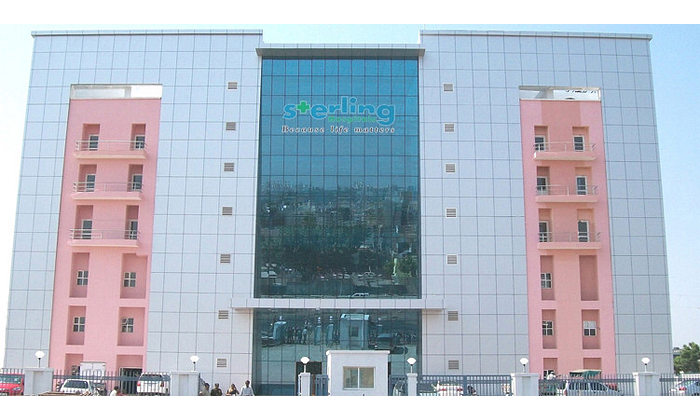Clinicians at Sterling Cancer Hospital in Rajkot, India, are using their Halcyon™ system to care for patients who might not otherwise have access to radiotherapy services. Head and neck tumors, mostly of the oral pharynx, make up about 70% of cancers treated at Sterling Hospital. The balance of treatments is largely for cancers of the lung, breast, pelvis, and abdomen.

“Sterling serves the regions of Saurashtra & Kutch in the western state of Gujarat, where tobacco consumption is very high,” explained Arun Shiva Balasubramanian, PhD, general manager and corporate head of medical physics at Sterling Group. “Consequently, we have a large population suffering from oral cancers—the most common cancer in this area. Prior to the installation of the Halcyon system in Rajkot, we couldn’t offer these patients radiotherapy treatment.”
On October 1, 2018, the Sterling clinical team treated their first patient for throat cancer on the Halcyon system. Since then, they typically complete 125 treatments per day. “The Halcyon system is running from 7 AM to 11 PM at the hospital, and we are treating about eight patients an hour,” said Dr. Balasubramanian.
To date, the team in Rajkot has treated more than 300 patients in just over two months. “The installation was completed in five days, and the commissioning went very smoothly,” noted Ghanshyam Gusani, zonal director of Sterling Hospital Rajkot. “Clinical deployment is easier than other installations because the machine comes complete with beam models loaded in the Eclipse™ treatment planning system.”
Integrated Imaging, Ease of Use, and Shortened Treatment Times
With the Halcyon system, all treatments are image guided. The clinical team at Sterling Hospital uses the system’s megavoltage (MV) cone-beam CT (CBCT) imager. “We have been pleasantly surprised with the quality of the imaging, especially for our head & neck cases,” remarked Dr. Balasubramanian. “The level of detail is remarkable.”

Treatments are mostly volumetric modulated arc therapy (VMAT). “We use about three arcs, and while we’ve delivered a few [fixed-field] IMRT plans using the system, our first choice is RapidArc® because of the ease and speed of delivery, which helps minimize patient motion,” said Dr. Balasubramanian. “Treatments are completed in nine steps. Once clinicians experience the Halcyon system workflow, they will find it hard to go back to using other machines.”
Treatment plan quality assurance (QA) involves the use of the Varian Portal Dosimetry algorithm, which was easy to set up and calibrate, according to Dr. Balasubramanian. However, after completing QA for the first ten patients, he became worried that something was perhaps not right. “Our treatment plan pass rate was 100%. I had to make sure it was working, so I called Varian, and our service rep verified that our results were correct. This kind of accuracy is unheard of. Since that time, I still get a pass rate of 99.99% for 90% of our cases.”
Gusani noted that Halcyon treatments can be completed very quickly, while maintaining high quality. “The average treatment lasts 50 seconds,” he said, referring to “beam on” time. “The combination of very short treatments and high quality is unprecedented. Our patients are coming into the hospital, receiving treatment on the Halcyon system, and leaving in 15 minutes.” '
Dr. Balasubramanian reported an unexpected consequence of the extreme efficiency. “Prior to adopting the Halcyon system, our team worked in four-hour shifts, but these included time spent sitting down during patient set up and treatment processes. Because the Halcyon system is so fast, our staff has no time to sit down. We reduced their shifts to two hours at a time so they could rest.”
_______________________________________________________
The information captured herein represents the genuine experience of the attributed individuals and may not necessarily represent the views of Varian or the above referenced institution. Individuals were not compensated for their participation. Radiation treatment may not be appropriate for all cancers. Individual results may vary.